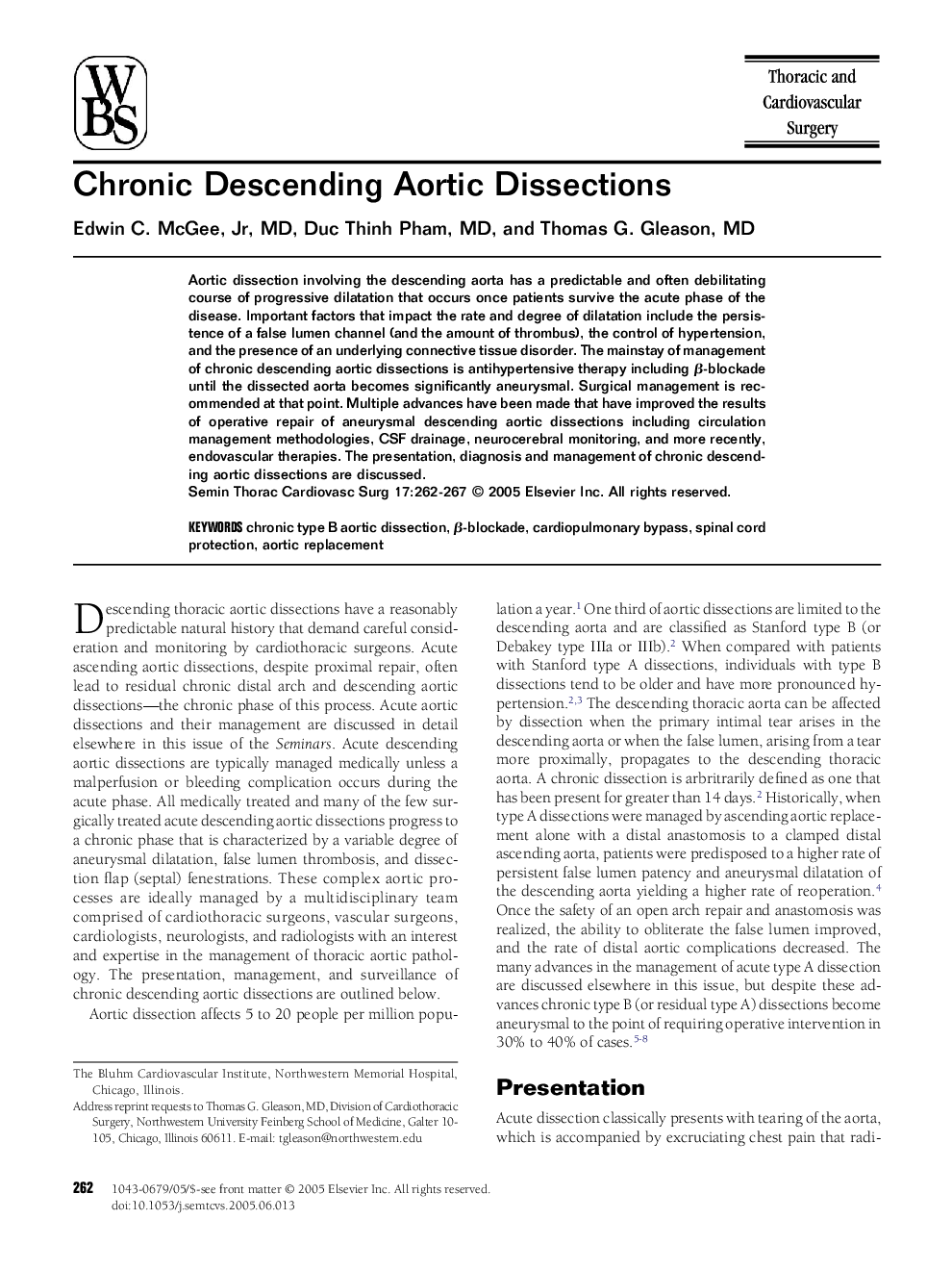| Article ID | Journal | Published Year | Pages | File Type |
|---|---|---|---|---|
| 9184323 | Seminars in Thoracic and Cardiovascular Surgery | 2005 | 6 Pages |
Abstract
Aortic dissection involving the descending aorta has a predictable and often debilitating course of progressive dilatation that occurs once patients survive the acute phase of the disease. Important factors that impact the rate and degree of dilatation include the persistence of a false lumen channel (and the amount of thrombus), the control of hypertension, and the presence of an underlying connective tissue disorder. The mainstay of management of chronic descending aortic dissections is antihypertensive therapy including β-blockade until the dissected aorta becomes significantly aneurysmal. Surgical management is recommended at that point. Multiple advances have been made that have improved the results of operative repair of aneurysmal descending aortic dissections including circulation management methodologies, CSF drainage, neurocerebral monitoring, and more recently, endovascular therapies. The presentation, diagnosis and management of chronic descending aortic dissections are discussed.
Related Topics
Health Sciences
Medicine and Dentistry
Cardiology and Cardiovascular Medicine
Authors
Edwin C. MD, Duc Thinh MD, Thomas G. MD,
